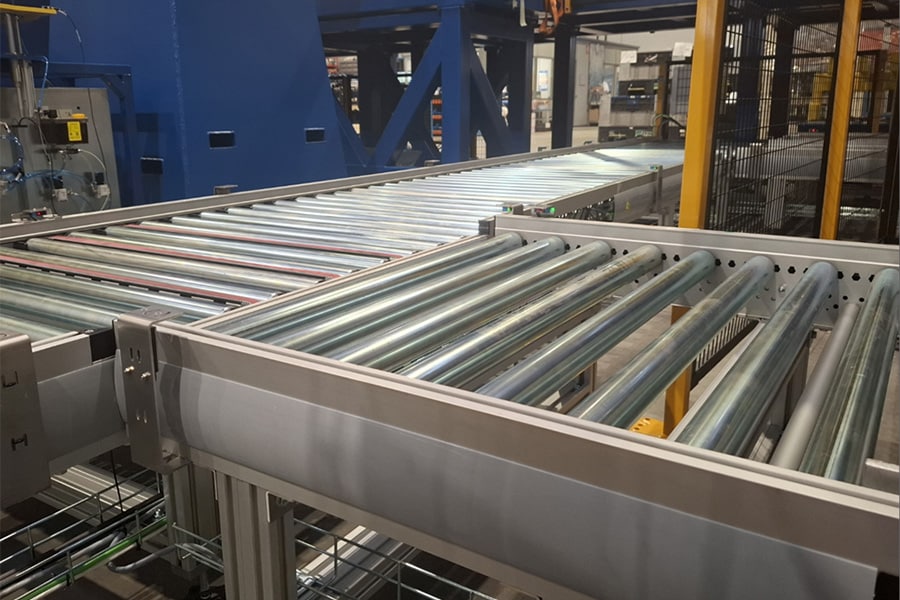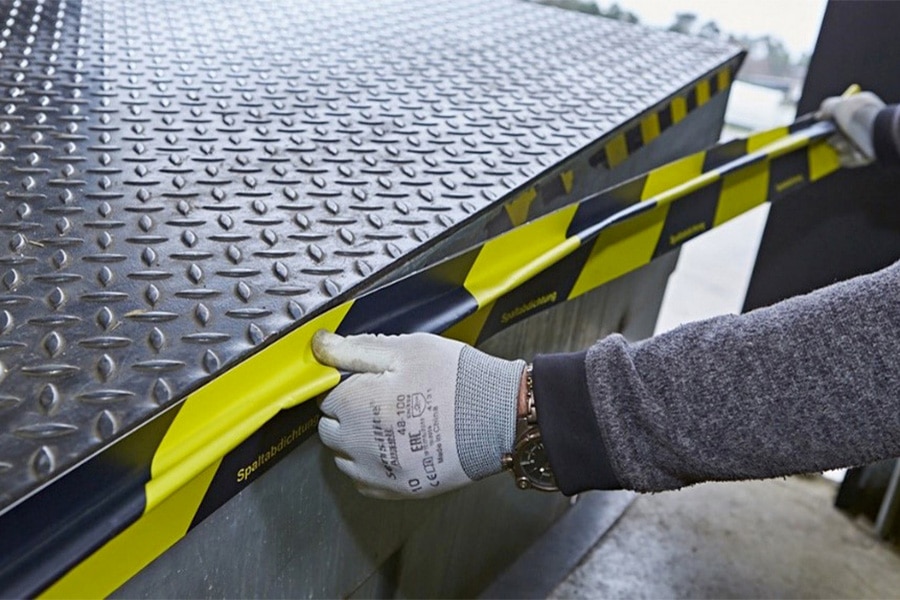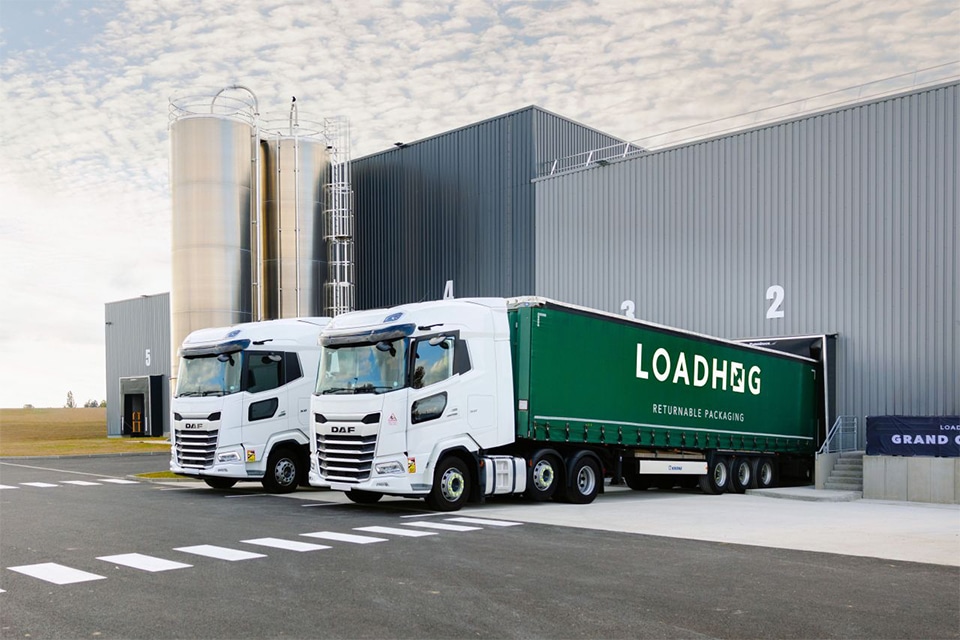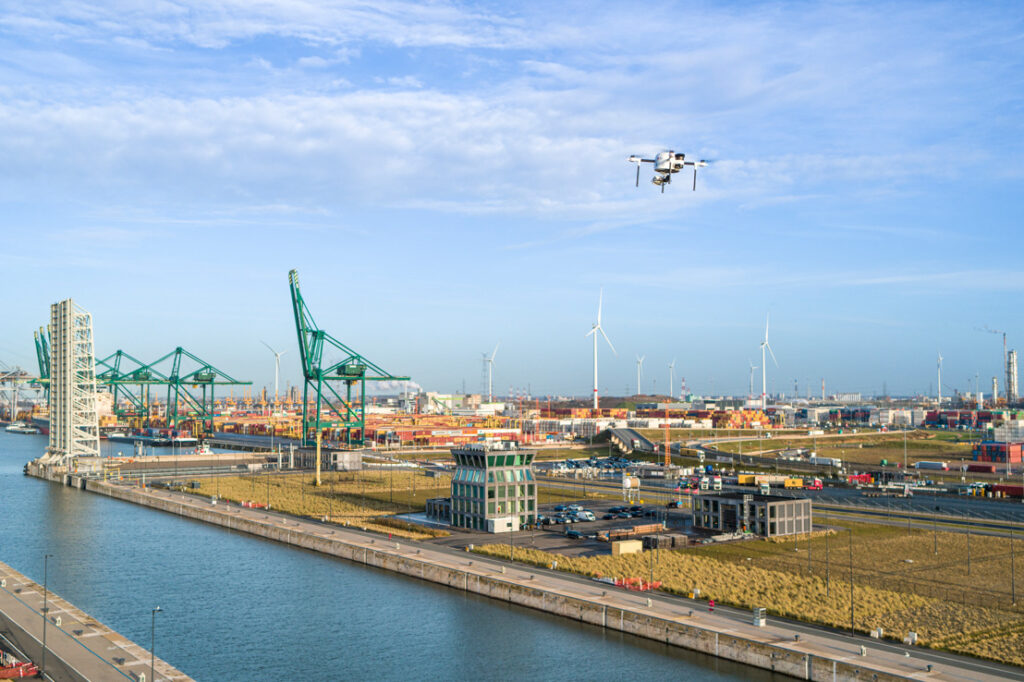
World first in Antwerp port area: drone network officially launched
Daily drone flights provide 'live feed' of port activities
From now on, six autonomous drones will perform daily flights in the Antwerp port area. Port of Antwerp-Bruges and partners DroneMatrix, Skeydrone and Proximus have officially launched this "D-Hive drone-in-a-box" network today. The network, a world first, makes an important contribution to overall security in the complex port environment.
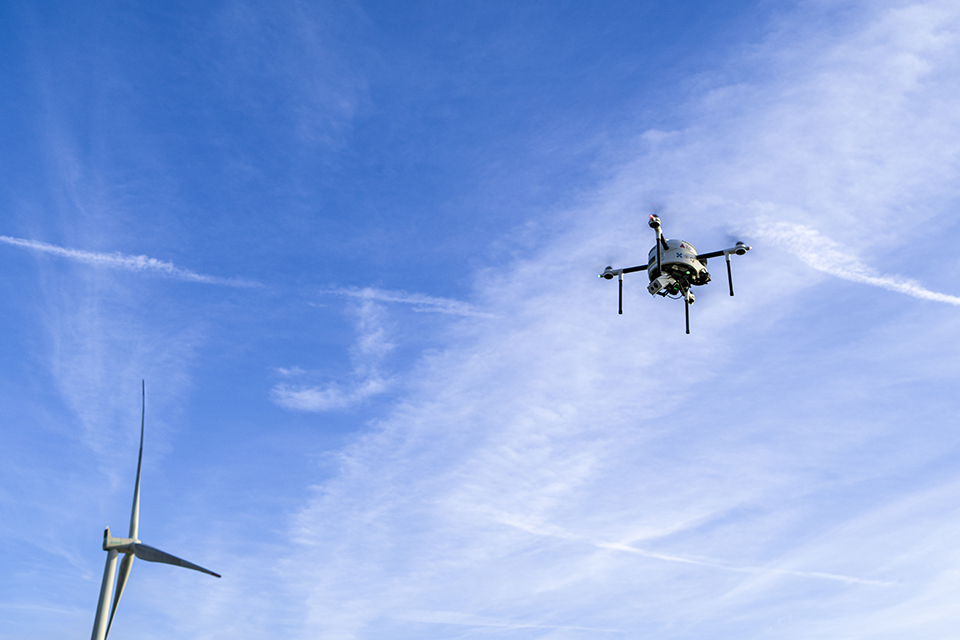
Six extra pairs of eyes
The Antwerp port area covers more than 120 km². The D-Hive network of six automated drones covers this entire area and as of now provides a flexible extra pair of eyes (x6) to support the coordination of smooth, safe and sustainable operations in this complex environment. Indeed, drones provide a unique aerial perspective and enable the port authority to manage, inspect and control a large area in a fast and safe manner. The port will deploy the drones for such purposes as berth management, monitoring, infrastructure inspections, oil spill and drift debris detection, and incident support to safety partners. The 18 daily and automated BVLOS (Beyond Visual Line of Sight) drone flights will be remotely controlled from a Command & Control Center central to the port.
World first
It is the first implementation worldwide on this scale in a complex industrial environment of BVLOS flights. These, in contrast to VLOS (Visual Line Of Sight) flights, occur out of the pilot's sight. Port of Antwerp-Bruges is working on the D-Hive network with partners DroneMatrix, Skeydrone and Proximus. Two months ago, the partners received the green light to launch the drone network. This operational license was built around a new BVLOS (known as pre-Uspace airspace) framework built by Skeydrone and approved by BCAA (Belgian Civil Aviation Authority) and EASA (European Union Aviation Safety Agency) as a legitimate and safe framework for BVLOS drone flights.
Live feed of port activities
Port of Antwerp-Bruges envisioned a network of autonomous drones as early as 2019 because these drones would play an increasingly important role in the port of the future. Last years several tests took place and participated in the SAFIR project to investigate the feasibility of drones in the port. As a result, the ambition of a network of autonomous drones is now a reality.
